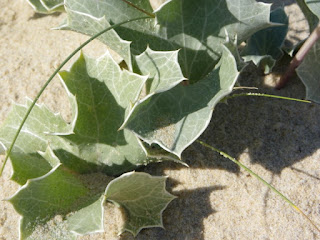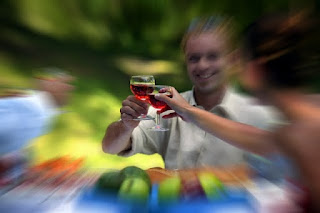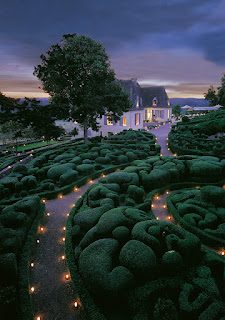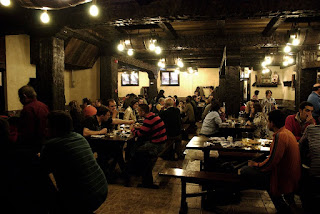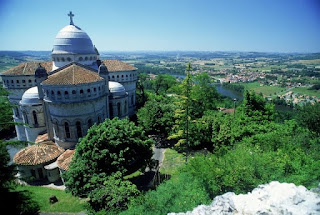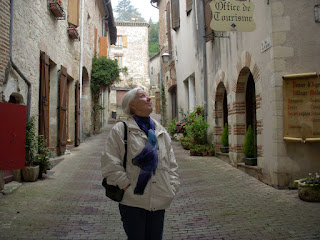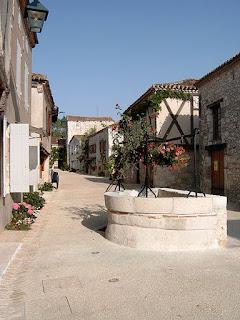Rembember I told you that I love January. There's the
oysters, the
galette des rois and then there's the beginning of the cidrerie season! Cidrerie is a phenomenon unique for the Pays Basque. If I have to be really honest, the best ones are on the Spanish side.. But the cider here has nothing to do with the Breton sweet cider. The basque cider is more like apple wine. It is done with a mix of apples that are sweet, acid and bitter, which gives a drink that surprises at first, but then becomes addictive.
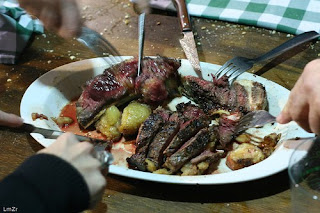
In the beginning there were the apple orchards in the Pays Basque. After the harvest in september-october, the cider was ready to drink beginning of January. They organised cider tasting, but of course you cannot only drink, you need to eat something. The people would bring their own meat, some eggs, walnuts to accompany the cider. Little by little the tradition grew and real restaurants developed around the barrels of cider. The season starts in January and ends when the barrels are empy, which usually occurs by the end of April. People come in busloads to enjoy the typical cidrerie menu, which consists of cod omelette, chuleta (côte de boeuf), fried cod with vegetables. Dessert is quince marmelade served with cheese and whole walnuts. And the real traditional ones still accept that you bring your own meat, like in the old days.... Sometimes you don't get your own plate, but everybody share the serving plate!

I think you start to get the idea, a cidrerie is a place where you go dressed in jeans, settle in at a big wooden table with benchen, prepared for a very festive and happy moment!
The cider is normally served à volonté, which means that you can drink as much as you want. It is served straight from the barrels. Every time they open a new barrel, they shout txotx, which means cork. When they take out the cork the cider starts flowning and everybody line up to fill their glasses. Don't fill it too much, the cider should be drunk at once and you will want to try different barrels. They each contain a different mix of apples and thus a different taste. Usually the mood is very festive with lots of laughing and singing..... !! Nothing better than a night at a cidrerie to forget the dark winternight outside...
You'll only find cidrerie in Pays Basque, most on the Spanish side but some on the French side. Today there are also restaurants called cidrerie than work like normal restaurants, with à la carte and cider served in a bottle. That can be very nice too, but it's not the real thing.
I've tried a couple of different ones. One is five kilometers from Sao Sebastian i Spain,
Saizar. Best chuleta I have ever had, and believe me, my standards are set extremely high. By midnight there was general singing of Spanish songs.
Like I said, the cider has a freshness and a hint of bitterness that surprises at first, but when you have gotten used to it, no way you go back to sweet cider. The alcohol rate is about five percent. Remember that the Spanish eat late if you want to book a table. Don't even try to book before 9PM!
Some adresses:
Listing of cidreries in the Guipuzcoa region in the north part of Spanish Pays Basque.
Txopinondo, a cidrerie in Ascain, close to Saint-Jean-de-Luz. I've been told it's a good place to go.
Cidrerie Aldakurria, don't know about it, but the site talks about a traditional cidrerie and their own apple orchards, so it sounds promising.
Cidrerie Chez Txotx, in Biarritz and Bayonne. Good food and atmosphere, but not a really traditional cidrerie.
Cidrerie du Fronton in Arbonne. My friend Mathilde who lives there recommends it.
Cidrerie Ttipia in Bayonne, my husband was there with some friends and he liked it.
Photos: Plate with chuleta, glasses of cider, restaurant room and dessert.






